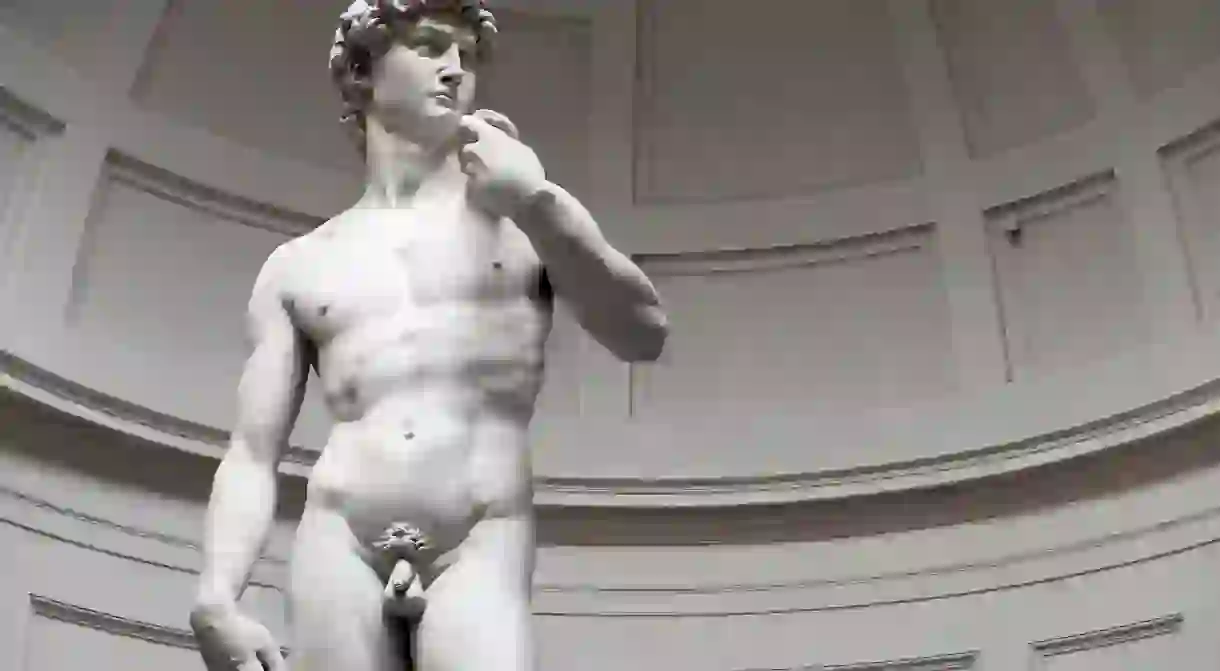Renaissance Masterpieces You Can Only See in Florence

Florence is known as the birthplace of the Renaissance, so it’s only fitting that the city holds countless examples of Renaissance art, including world-famous masterpieces. With dozens of galleries, architecture and statues, Florence is a city for art and history-lovers alike. Even if you know almost nothing about either, you’ll soon understand their importance as the city holds its history and art in high regard. Here are some of the world’s most famous and beautiful works of art and architecture from the renaissance period of Florence.
Did you know you can now travel with Culture Trip? Book now and join one of our premium small-group tours to discover the world like never before.
Michelangelo’s David

Everyone knows the famous David sculpture by Michelangelo. The perfect man. A great display of human anatomy. Simply marvellous. See him in all his glory standing 17 feet (5.2 meters) tall, playing tricks on your mind with the perfect classical proportions of his body from the angle of the viewer. Michelangelo was a great scientist, artist and philosopher, so there was meaning in all the details.
Botticelli’s Birth of Venus
Even if you are not an art lover, you will probably have seen a photo of this painting at least a few times in your life, whether in a textbook, on TV, or referred to in a pop culture parody. See the real thing. It’s way better in person. Venus takes on a form of her own in Botticelli’s signature style and looking at her beauty almost puts you in a trance.
Botticelli’s Allegory of Spring (La Primavera)
Sandro Botticelli is one of the most famous artists from the Medici era. His works are peppered throughout Florence, and especially in the Uffizi Gallery where some of the greatest masterpieces are held. His work is a staple of Renaissance history and art where he depicts seasons, gods, and other unworldly beings as human in his work, making it both thought-provoking and beautiful.
Giorgio Vasari’s Last Judgement
This is the most amazing fresco art painted inside the famous Florence Cathedral dome.It portrays a biblical tale of the last judgement and is strikingly similar in style as the Sistine Chapel‘s ceiling. Vasari was a known admirer of Michelangelo, so his style is similar, and the talent isn’t lacking. If you didn’t know any better, you would think it was done by Michelangelo himself. Be prepared to be awed by incredibly beautiful religious scenes depicted high above your head.
Titan’s Venus of Urbino
This oil painting was inspired by Titan’s depiction of Giorgione’s Sleeping Venus. In Titan’s version, however, he shows Venus in a domestic setting, giving the impression that she is tangible, domesticated, and sensually explicit. The painting holds no religious connotations, but seems rather to be purposefully erotic. Against the other paintings near it in the Uffizi Gallery, it stands out and draws the viewer to it.
Brunelleschi’s Dome

This is an architectural marvel. To this day, specialists are shocked that the building still stands strong. The herringbone brick pattern along with the ribs built into the structure was a genius idea back then, and has proven even more amazing with time. On top of that, the entire cathedral itself is just breathtaking.
Ghiberti’s Gates of Paradise
This is a famous piece of art, and best of all, it’s free to see. The art is gilded in gold, decorating the doors of the baptistery. Depicting biblical stories unto the gates of heaven is fitting for being displayed on the doors of the holy baptistery building next to the cathedral.
Donatello’s David
No, this is the not the “perfect man” of marble made by Michelangelo. Donatello created the biblical David in bronze in the scene of triumph when David defeated Goliath. In the victorious moment, David is depicted as an effeminate youth, proudly resting his foot on Goliath’s severed head.
Masaccio’s Holy Trinity
Although not one of the works of art that might come to mind when thinking of the Renaissance greats, this fresco located in the Basilica of Santa Maria Novella was a great historical piece of the period. Thought to be the first known example of one-point linear perspective, the fresco was painted between 1425-27, and was Masaccio’s last major commission before his death in 1428. It depicts the Holy Trinity at the Crucifixion, and what is most fascinating is the realistic treatment of Christ’s body weighed down by gravity on the cross. On either side of the cross is Christ’s mother, Mary (left), and on the right is Saint John, while the figures in the forefront are believed to be the unknown commissioners of the fresco.
Masaccio died young leaving behind a limited amount of work, but a great name for himself. Vasari, another famous artist of the period, had read about Masaccio and his great works which captured an illusion of space with the use of sight lines, trompe-l’œil and symmetry. When the decision was made to build an altar over the fresco at a later date, Vasari did as he was commissioned to, but left a small gap between the new altar and the fresco on the wall, seemingly preserving and protecting the amazing fresco from harm. Since then, the fresco has been restored and now is on display in the church for all to see.
Fra Angelico’s San Marco frescoes
The church of San Marco is absolutely full of Renaissance art, frescoes, golden architecture and the holy likes, but the special frescoes are painted by Fra Angelico. Although the church itself is dark and occasionally maintained, the frescoes shine through in all their glory. Far Angelico spent much of his time at this church and was a highly regarded man of God who showed his love in his art. This specific fresco is Fra Angelico’s depiction of Da Vinci‘s Annunciation.













